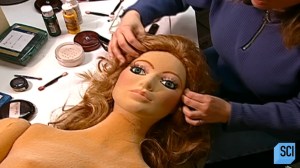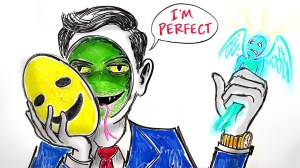Duncan Clarke explored the phenomenon of Pareidolia, specifically why the human brain often sees faces in inanimate objects.
These examples involve a type of perception called Pareidolia where you interpret some kind of kind of pattern or object in a completely innocuous stimulus. Since facial recognition is so strong a lot of the time, this involves seeing faces in things.
He further explains that humans are exposed to faces early, thus training our brains to read them.
From the moment we’re born and we look out at our parents we’re we’re gazing at their faces we spend a lot of our time looking at other people’s faces recognizing who they are and trying to read what those faces might indicate about how the person feels or what they might bethinking since we’re social animals this totally makes sense our perception evolved to be really good at reading faces.

He also offers amusing and historical examples of this phenomenon while looking at the psychology behind it.
I find this kind of playful manipulation of our facial recognition really cool. Our cognitive systems are so efficient that they pattern match onto these emotional states and identities of facial subjects completely automatically before we’re even able to consciously interpret the visual information in the scene.
via The Awesomer






